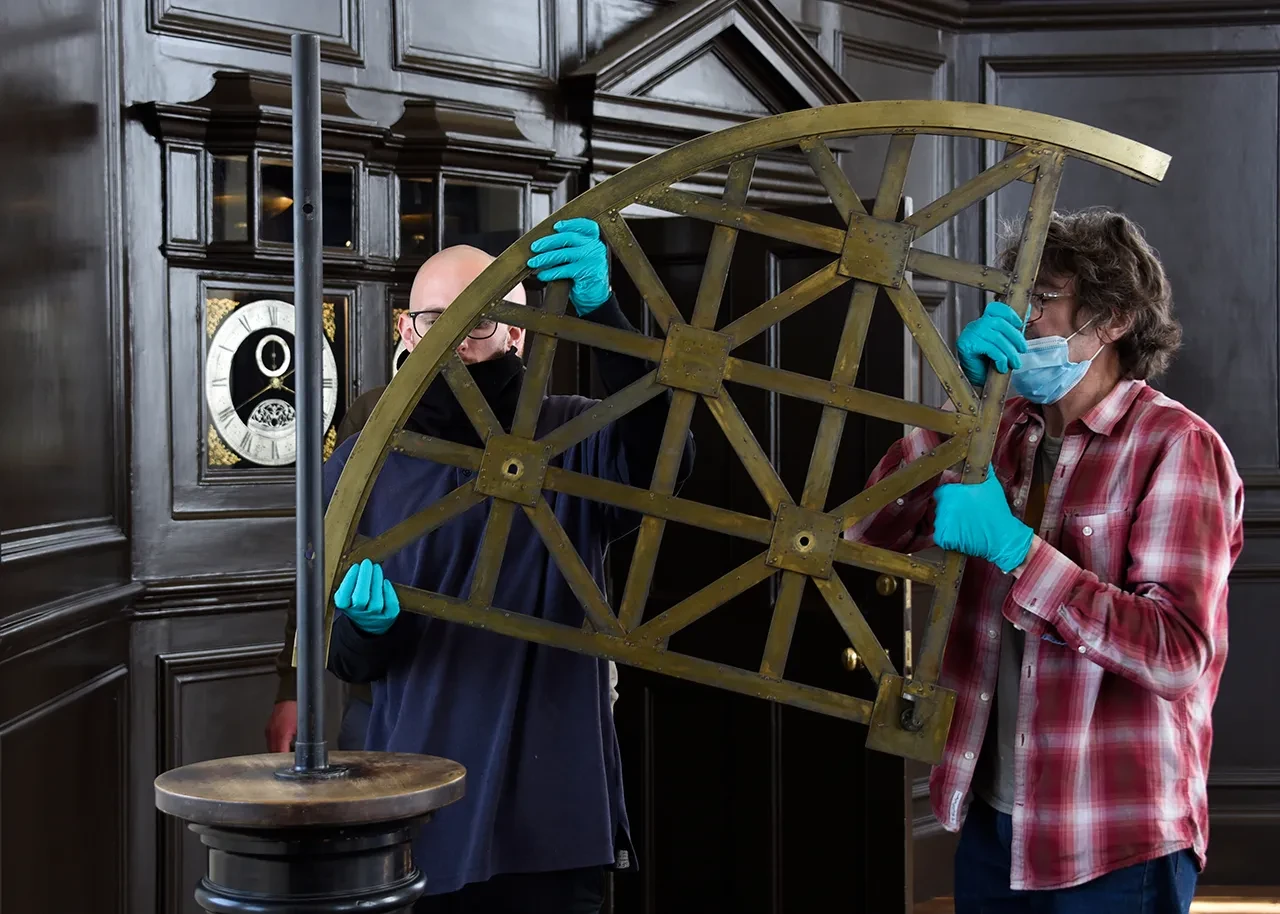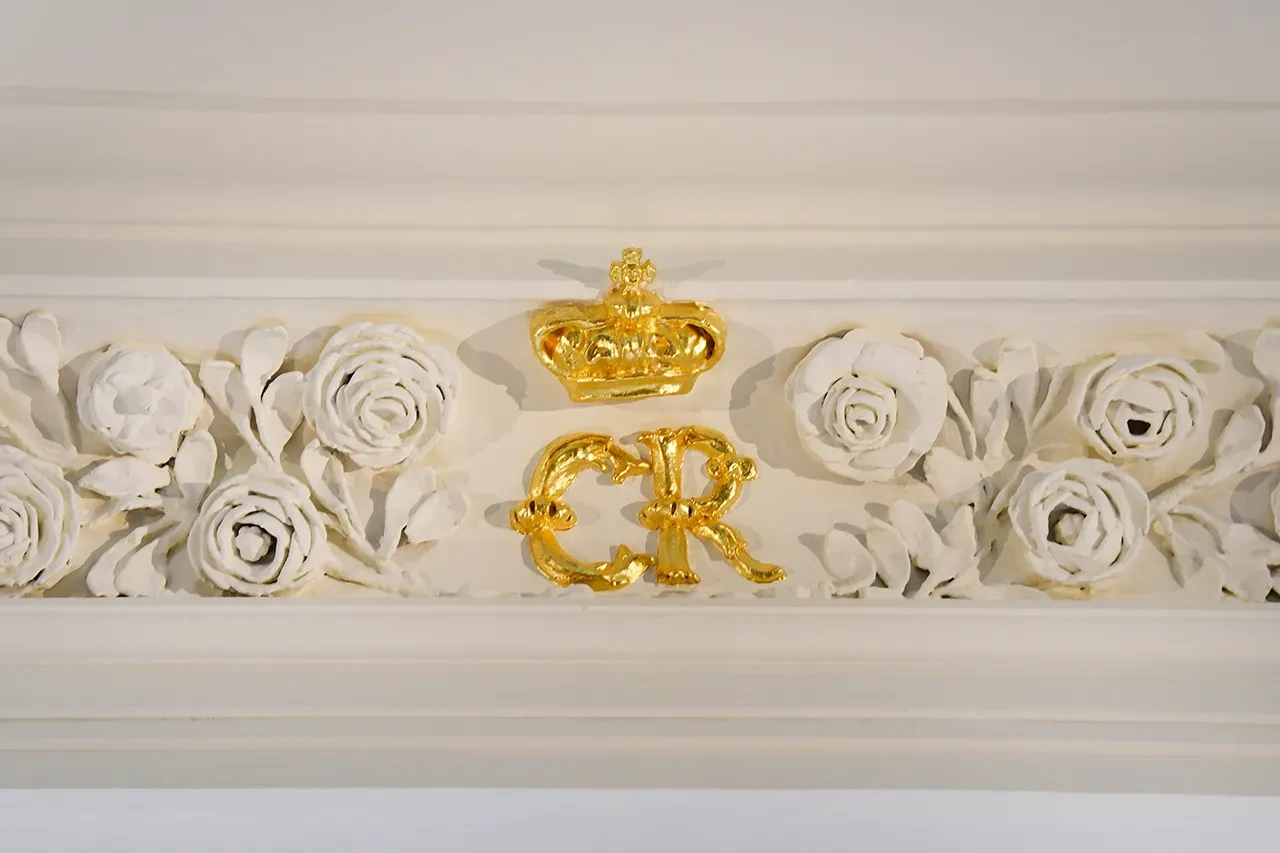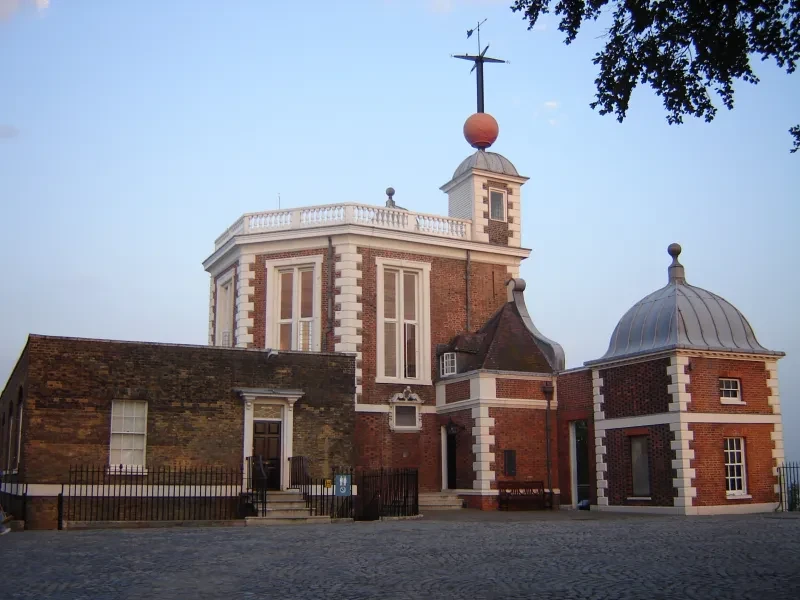
Essential information
| Location | |
|---|---|
| Price | Included with entry to the Royal Observatory |
| Free entry for members. Not a Member? Join now |
The Octagon Room is the oldest part of the Royal Observatory Greenwich.
It was commissioned by King Charles II, designed by famed architect Sir Christopher Wren and completed in 1676.
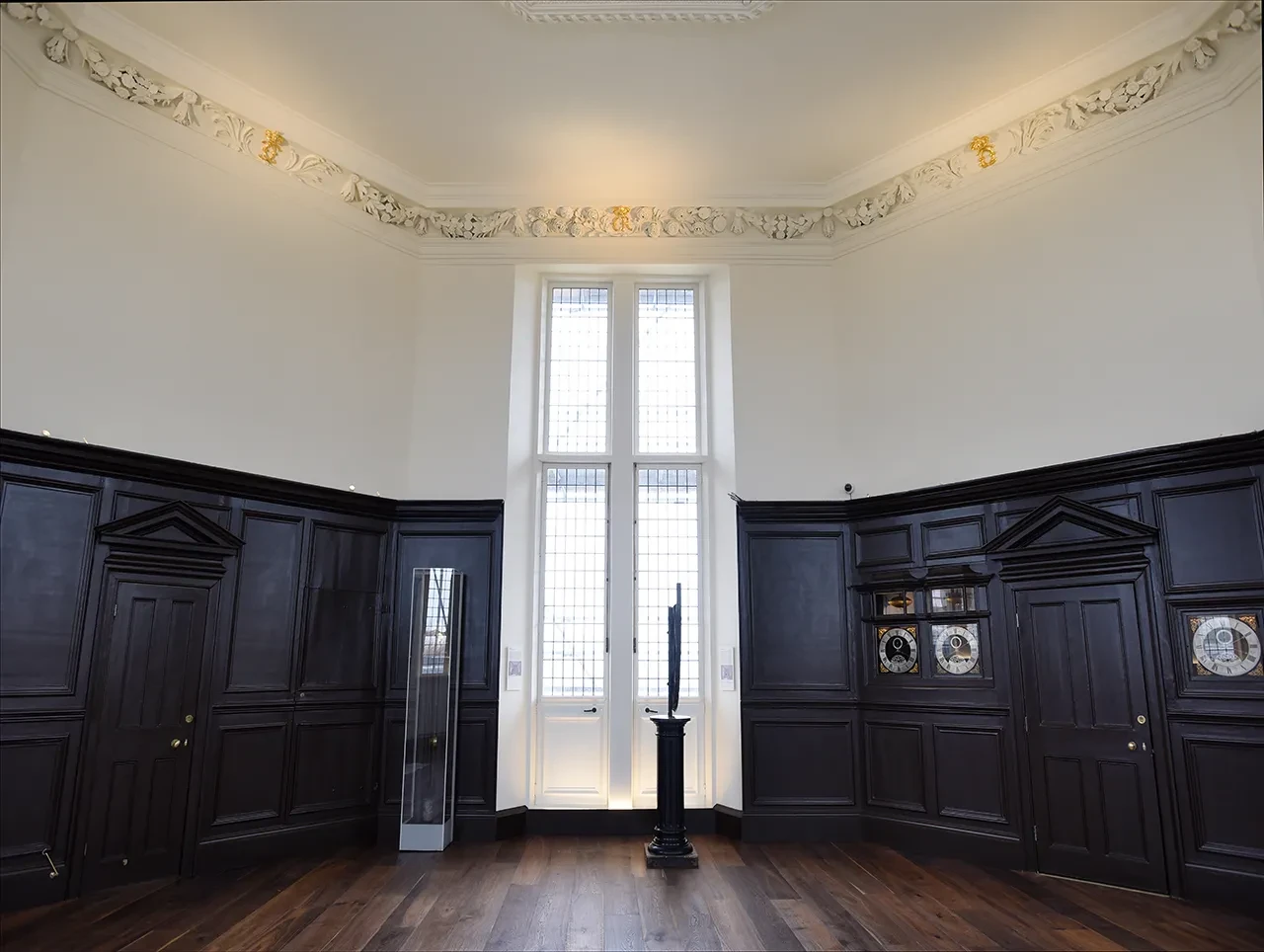
The room's eight-sided shape, high windows and lofty position were all designed to provide astronomers with an uninterrupted view of the night sky. The high ceilings also allowed the Observatory to install some of the most advanced clocks of the age.

Architecture, astronomy, royal pomp and ceremony: discover the many sides to the Octagon Room as part of your visit to the Royal Observatory.
Whereas, in order to the finding out of the longitude of places for perfecting navigation and astronomy, we have resolved to build a small observatory within our park at Greenwich, upon the highest ground, at or near the place where the castle stood, with lodging-rooms for our astronomical observator and assistant"
King Charles II
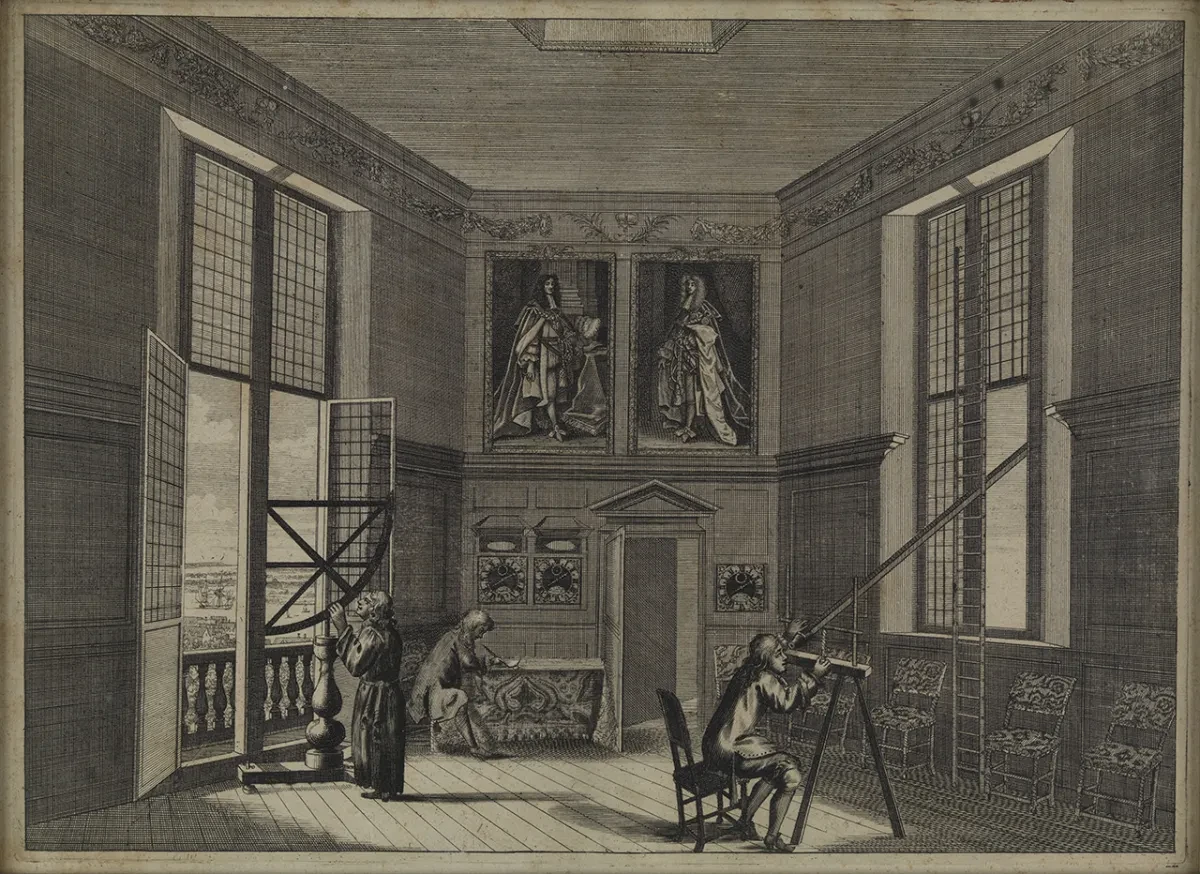
History of the Octagon Room
The beautiful Octagon Room was created by Christopher Wren on the orders of Charles II. It is one of the few Wren-designed interiors that you can still see in London today.
The room's high windows and multiple south-facing views gave first Astronomer Royal John Flamsteed a panoramic view of the night sky. Different instruments could be set up to carry out observations from each window, as this rare print illustrating the interior of the 'Star Room' shows.
The main Observatory building was constructed using the old foundations of Greenwich Castle, which had fallen into decay following the British Civil Wars.
It was a practical solution for a project short of funds. However, this construction made the room less useful when attempting to measure the position of stars.
Astronomers use meridian lines - imaginary lines running due north or south of the viewer - as a reference when making star observations. By repeatedly measuring at what time and what height the stars cross these lines, it's possible to build up an accurate map of the sky.
In the Octagon Room however, none of the walls align with a meridian. Flamsteed in fact made many of his observations from a small brick shed in the garden outside the main Royal Observatory building.
Behind the scenes

Visit the Royal Observatory
Keep exploring
Discover more about the early history of the Royal Observatory Greenwich


